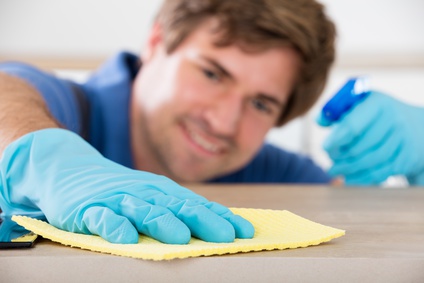January 27, 2017
The basics of fridge cleaning
Fridge hygiene is the alpha and omega, otherwise bacteria and mould multiply in no time. This is the reason why a fridge should be cleaned once a month, even if one does not detect grime at first glance.
The reality is usually the opposite and errors are often made during cleaning. But how do you clean a fridge properly and correctly?
Firstly, following the correct sequence and using the appropriate cleaning utensils are important. Follow these few short steps below to do this properly:
Step 1 – You’ll need two or three microfiber cloths and a pH-neutral cleaning agent; as an alternative you can also use a commercial detergent as a cleaning agent. The microfiber cloths should either be new or have been washed beforehand at 90 degrees, because cleaning cloths used in households or businesses contain the most bacteria.
Step 2 – Clear the fridge completely and quickly. This keeps energy loss within limits. Now turn the fridge off or pull the plug out. Please remove all removable parts such as racks, drawers, shelves, etc. and wash them in the sink with warm water and detergent. Then dry them thoroughly and put them aside.
Step 3 – Now you can start to clean the inside. A microfiber cloth moistened in warm water with a dash of detergent is also the best to use in this case. Do not forget to clean the seals. Grime easily collects in the grooves. Once everything has been wiped clean, rinse all with clear water and dry with a cloth. Make sure that no cleaning water finds its way into the drainage channel.
Step 4 – Once the inside and the seal are clean and dry, the fridge is wiped on the outside. A soft sponge moistened with some water and detergent is the best to use. If you have a stainless steel fridge, you can of course use a special cleaner for this purpose. Never use any type of abrasive powder or silver polish as these damage the surfaces.
Step 5 – If you have a standalone unit with a grille at the rear, vacuum the grille with a vacuum cleaner. The more dust on the grille, the less heat can be dissipated into the air and the more the compressor inside the fridge has to work. This also causes a sharp increase in power consumption and quickly turns an “unkempt” fridge with an original energy efficiency rating of A into an energy class B or C.
Step 6 – Put everything back into the fridge and switch the power back on.
Do you have a cooler with a promotional display or printing and do not know how to best clean it? No problem, just contact us. We of Gastro-Cool GmbH & Co. KG specialise in the production of advertising and display coolers and can assist you with the correct cleaning tips.

